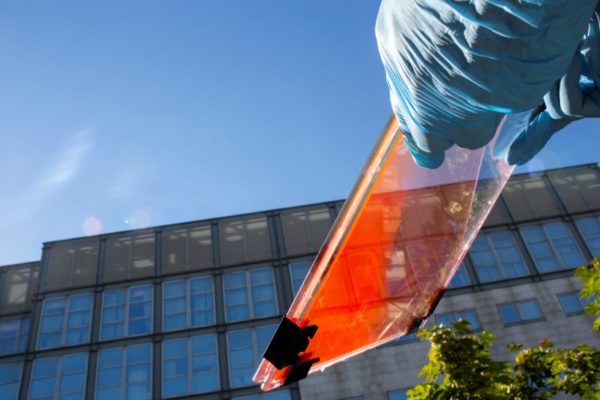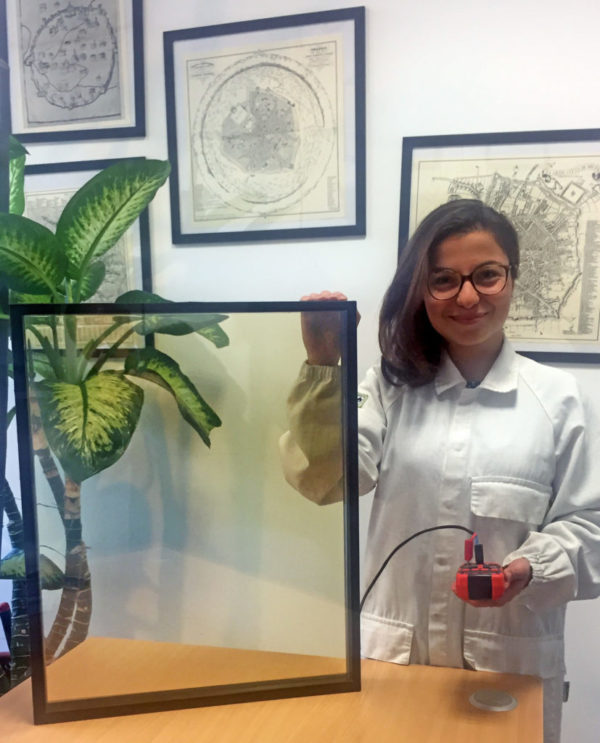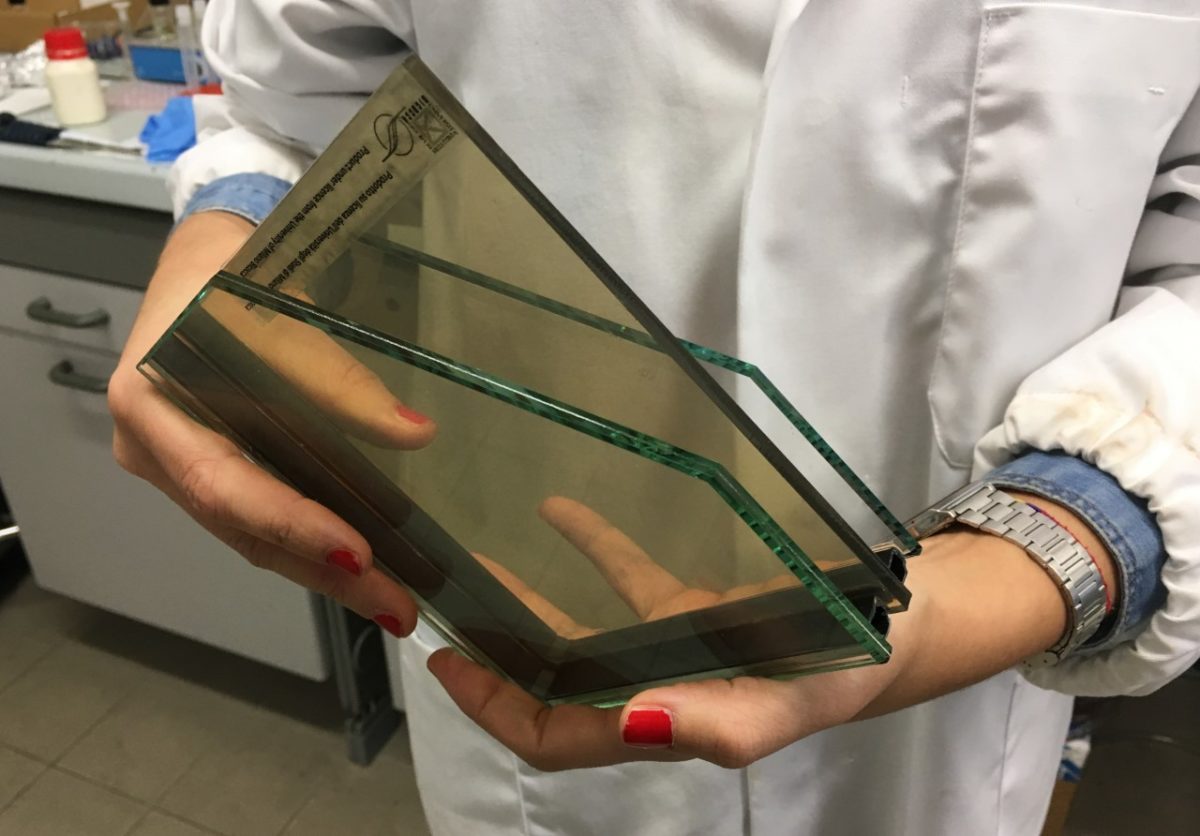Italian startup Glass to Power has developed a luminescent solar concentrator (LSC) technology that can be integrated into active architectural elements and windows.
The devices consist of semitransparent plastic slabs doped with highly emissive chromophores that absorb sunlight and emit long-wavelength photons. “These photons are guided by total internal reflection to the device edges, where they are converted into electricity by conventional PV cells installed along the slab perimeter,” the company told pv magazine.
It said that the devices are easy to integrate into active architectural elements and are ideal for near zero-energy balance buildings in highly populated urban areas where there are not enough suitable rooftops to collect energy.
Colorimetric characterization
The technology is based on nanoparticles known as chromophores, which decouple the light-absorption and emission processes. “This made it possible to build prototypes with good generation efficiency even for areas of hundreds of square centimeters, which can be easily scaled up to the dimensions required for commercial applications,” a spokesperson for the company said.
The LSCs are essentially colorless, which is a key requirement for their application in building-integrated photovoltaics.
“A complete colorimetric characterization demonstrated that our LSC does not introduce relevant distortion of the transmitted light nor modifications to the indoor-to-outdoor chromatic perception,” the spokesperson said.
Stable and environmentally friendly large-area LSCs can now be produced for BIPV modules, Glass to Power claims. The company spokesperson added that the technology allows the development of low-impact photovoltaic windows that can be easily integrated into the architecture of passive buildings, in a way that makes them virtually invisible from inside and out. The LSCs are said to be similar to lenses for sunglasses, rather than films that are commonly applied to glazed windows to reduce indoor sunlight.
“The degree of transparency of LSCs, moreover, can be determined at the production stage according to customer’s needs, to obtain the best compromise between absorbed energy and amount of light for indoor lighting,” the spokesperson said.
Optical efficiency
The quality of light transmitted, according to the UNI 10380 certification, is located in group 1A, which is the best source for lighting in homes and hospitals, Glass to Power said. A Farnsworth-Munsell 100 test, which is one of the most famous color vision tests currently available, showed that the LSCs do not alter color percept ion in photovoltaic windows, the company claimed.
ion in photovoltaic windows, the company claimed.
Glass to Power has obtained a 3.2% conversion efficiency rate, with a degree of transparency in the visible spectrum of around 80%. “That is, only 20% of the light is used for power generation while the remaining 80% goes through the panel to illuminate the indoor environment,” the company stated.
The optical conversion efficiency of the blue-ultraviolet fraction of the solar spectrum reaches values of more than 10%. “In addition, ‘ray-tracing’ simulations based on experimental data obtained from our prototypes show that these performance is also conserved for large dimensions, paving the way for photovoltaic windows with efficiency levels exceeding 5%,” the spokesperson said.
The nanoparticles are entirely made of inorganic materials such as silicon, which are intrinsically stable to solar irradiation, without any risk of degradation. That guarantees continuity and the durability of electricity generation, according to the company. It added that it has only used easily recyclable plexiglass and silicon nanoparticles for the LSCs, or other inert semiconductors without heavy metals.
Glass to Power is based in Rovereto, in the northern Italian province of Trento. It currently has a production capacity of 300 grams of nanoparticles per month, but it hopes to raise that to 100 grams per day by installing new production equipment.
This content is protected by copyright and may not be reused. If you want to cooperate with us and would like to reuse some of our content, please contact: editors@pv-magazine.com.




How about just using solar cells built into vertical or horizontal blinds? User or automation can control the light level/power generation balance by adjusting the angle of the blinds. Can be added to existing windows. Charge batteries during the day and discharge into built-in LEDs and USB ports at night. How ’bout it?
Onxy Solar, a Spanish built-in photovoltaic manufacturer has almost transparent glass that produces energy. How does this new efficiency/transparency product compare? Onxy has been building several buildings around the world in the last few years, and seems to be quite successful. It is a current commercial product and I think we are at the point where we need to implement existing technologies and not hoping for future products.